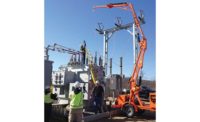 How can you as an employer practically protect your lone workers, when it is patently obvious that you cannot do so in any conventional sense?
How can you as an employer practically protect your lone workers, when it is patently obvious that you cannot do so in any conventional sense?
Since you cannot be with them in an emergency, (they wouldn’t be lone workers if you were) you must go as far as you can in helping them to help themselves.
Consider protection as consisting of two components: prevention and response. Prevention is achieved by embedding ways in which employees avoid difficult situations in the first place. Response is there when protection fails.
While prevention may reduce the number of occasions where a lone worker will get into a situation which will result in their harm, “reduce” is not the same as “eliminate,” so there will always be a need for response services.
Response with prevention in isolation is still insufficient; adding training and management will result in a culture of safe working, in other words – protection.
Prevention
Prevention starts with a well thought-out policy leading to sensible procedures which are developed in consultation with the lone working employees and their managers.
Response
Sooner or later Prevention will fail and an employee will need a Response; and it must be fast and effective.
This where a sensible organization will choose a service based on the British Standard for Lone Worker response – BS8484.
Training
Training binds Prevention and Response together. Training should cover:
- Application of policies and procedures
- How to make best use of Lone Worker Response devices
- Awareness and how to avoid potentially dangerous situations
- How to manage dangerous situations
- The role of personal responsibility for personal safety
Management
Good management has to balance the needs of the organization against the needs of the individual. Management must protect the organization in law with its reputation and effectiveness intact, while protecting the individual employees out on their own in the community, other workplaces or in transit between them.
- A manager with responsibility for protecting Lone Workers needs to consider many factors; among them:
- How best to achieve protection for both the organization and Lone Workers without jeopardizing the work they are employed to do?
- What can be done in-house and what can be outsourced?
- How will initial and follow-up training be delivered? In-house or outsourced?
- How will Lone Workers be motivated to always follow the procedures laid down for them, including use of Lone Worker Response services?
- What reports will help manage the contract and how will they be delivered?
Regular reviews with Lone Workers
Prevention & Response without Training and Management is like a car without a driver – looks fine in the car park but not much good when you want to go anywhere serious.


